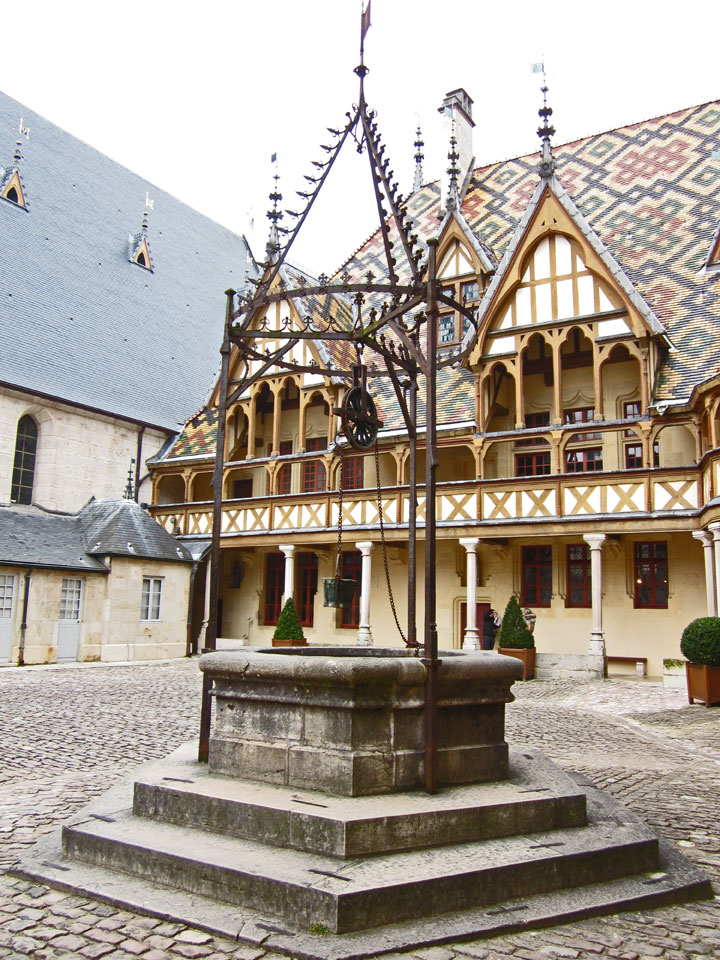

Hospices de Beaune

Hospices de Beaune
The Hospices de Beaune or Hôtel-Dieu de Beaune is a former charitable almshouse in Beaune, France. It was founded in 1443 by Nicolas Rolin, chancellor of Burgundy, as a hospital for the poor and needy. The original hospital building, the Hôtel-Dieu, one of the finest examples of French fifteenth-century architecture, is now a museum. Services for patients are now provided in modern hospital buildings.
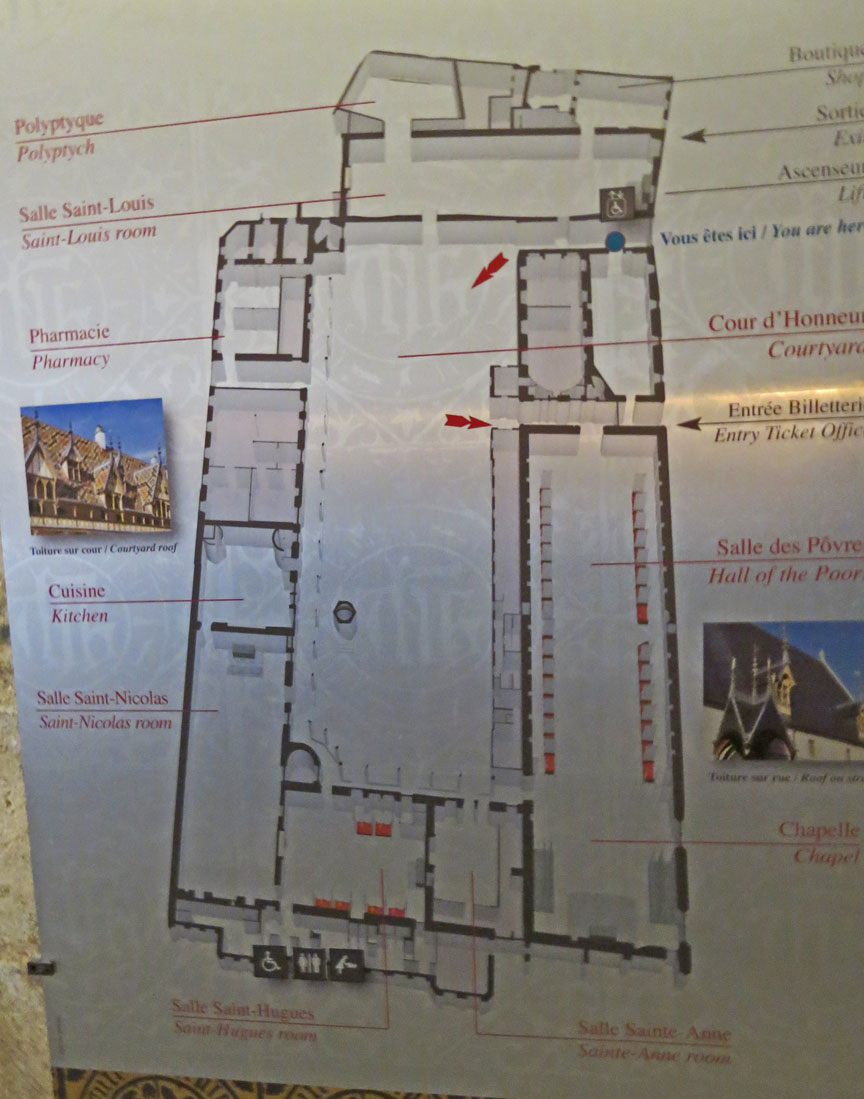
An important charity wine auction is held in November each year (formerly in the
great hall of the Hôtel-Dieu).
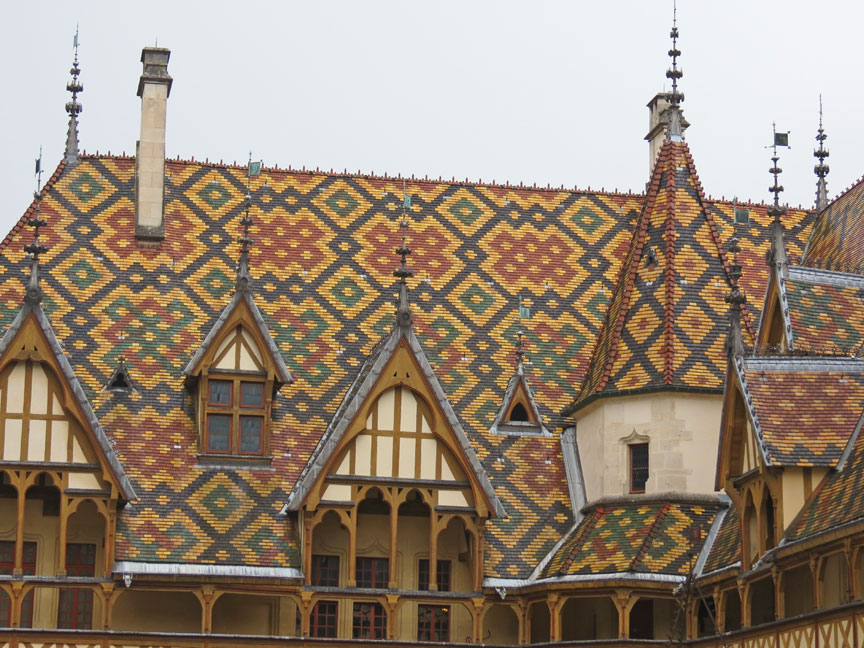
Polychrome roof of the Hospices de Beaune.
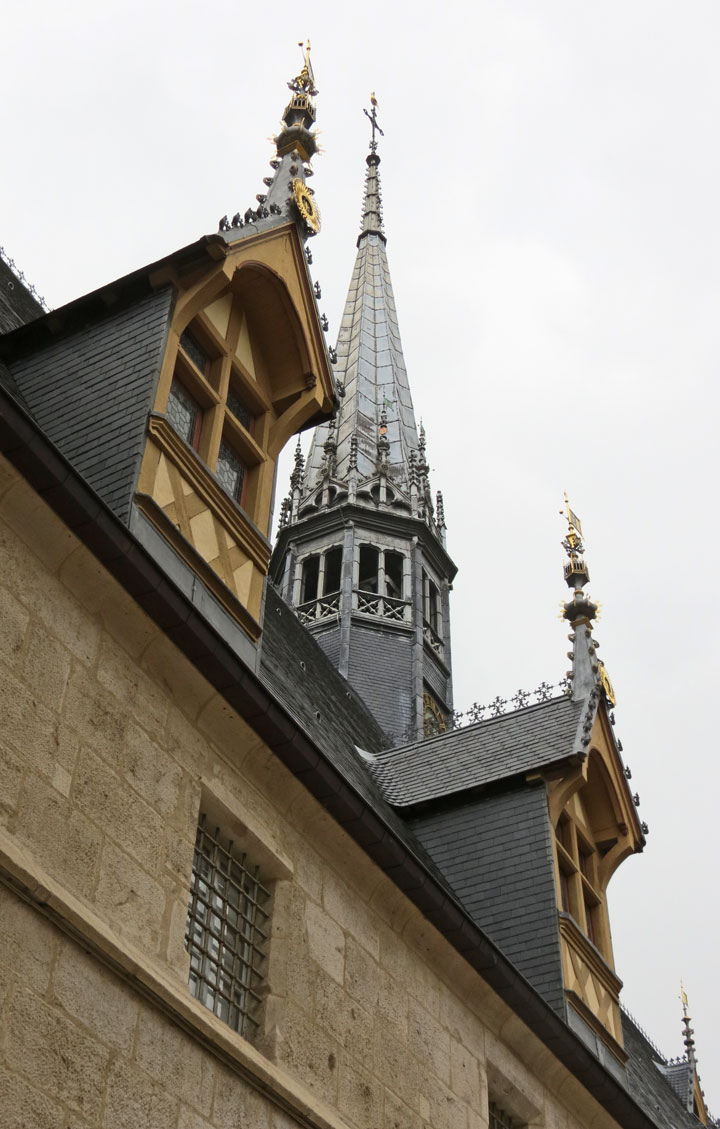
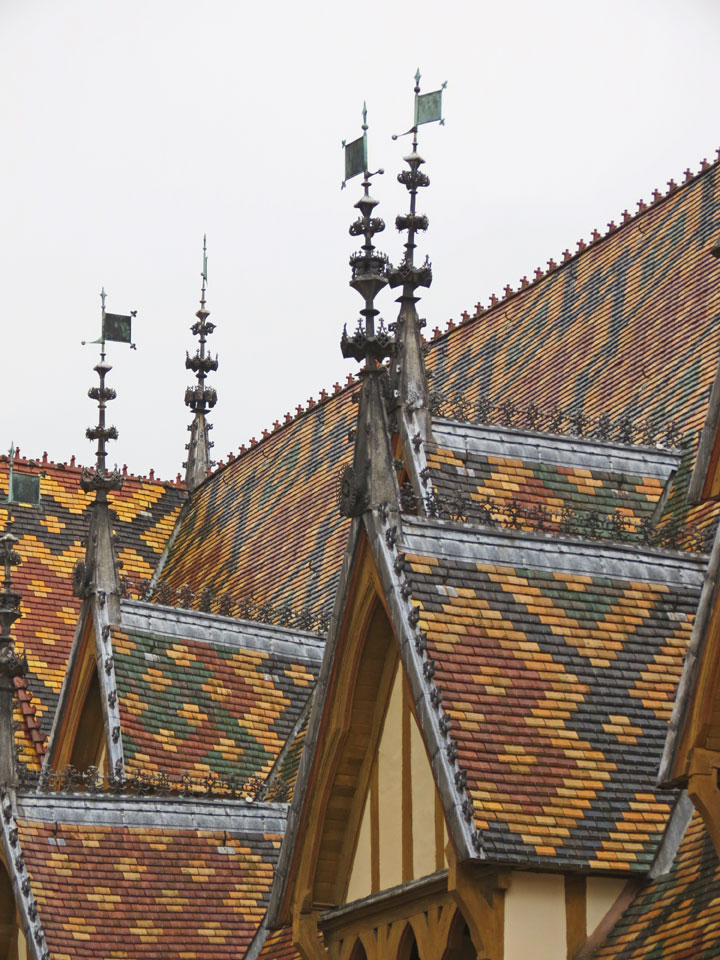

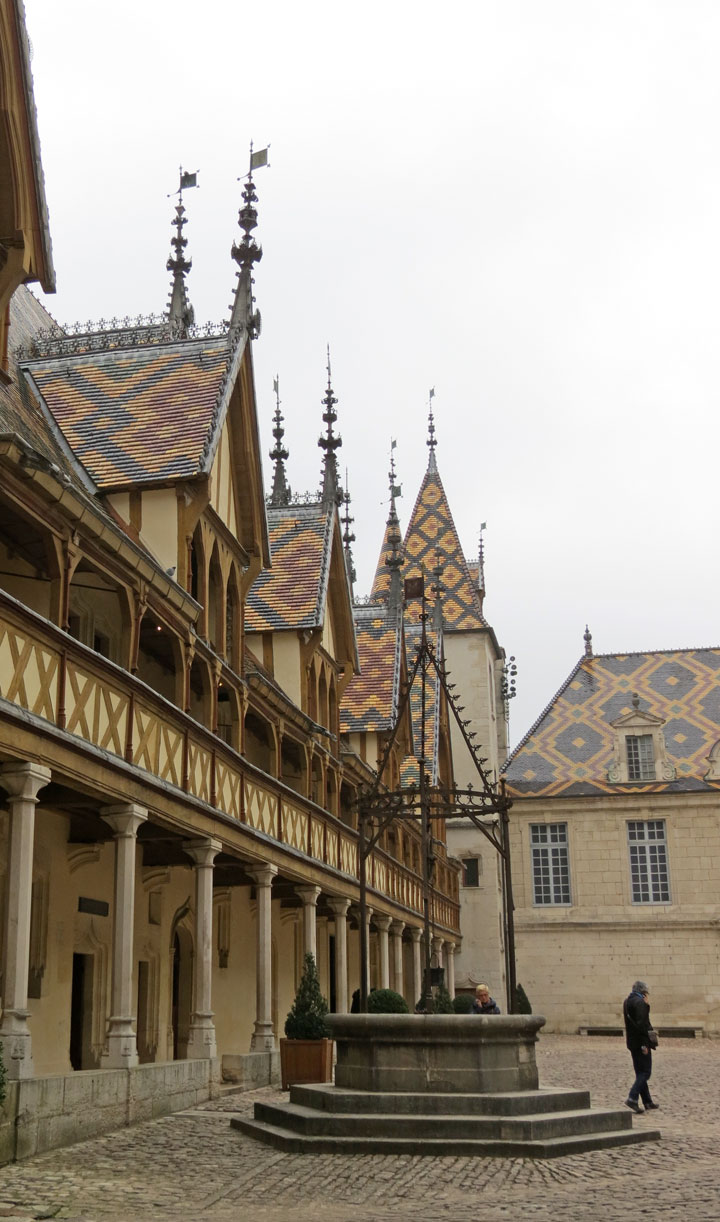
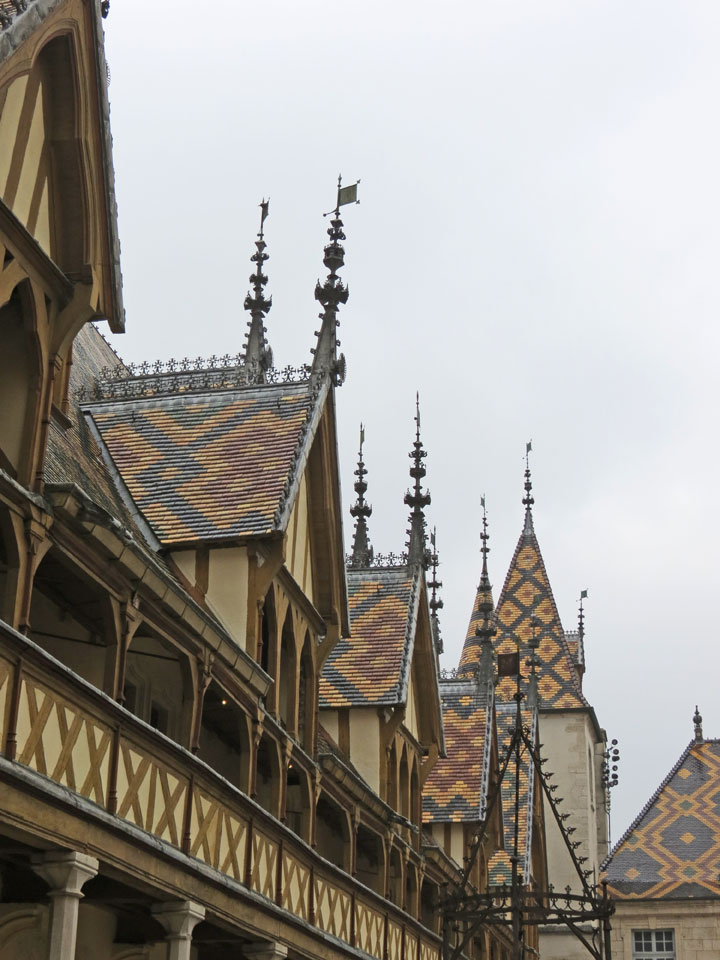
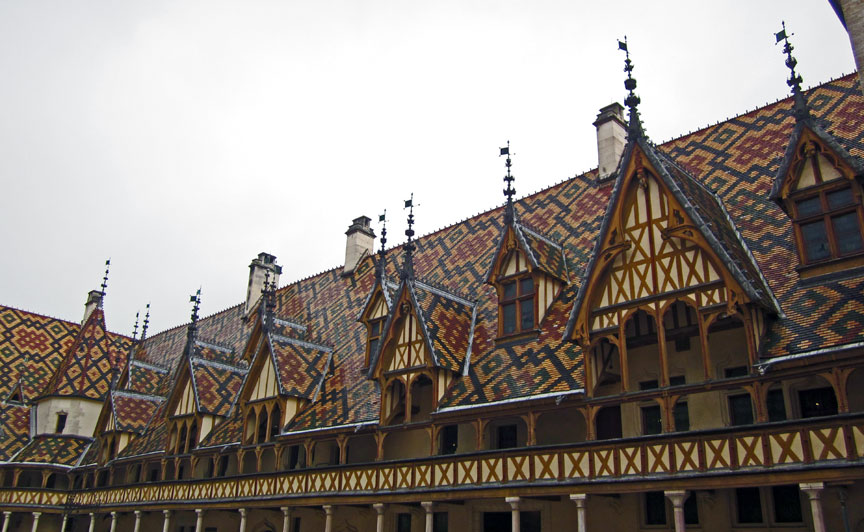
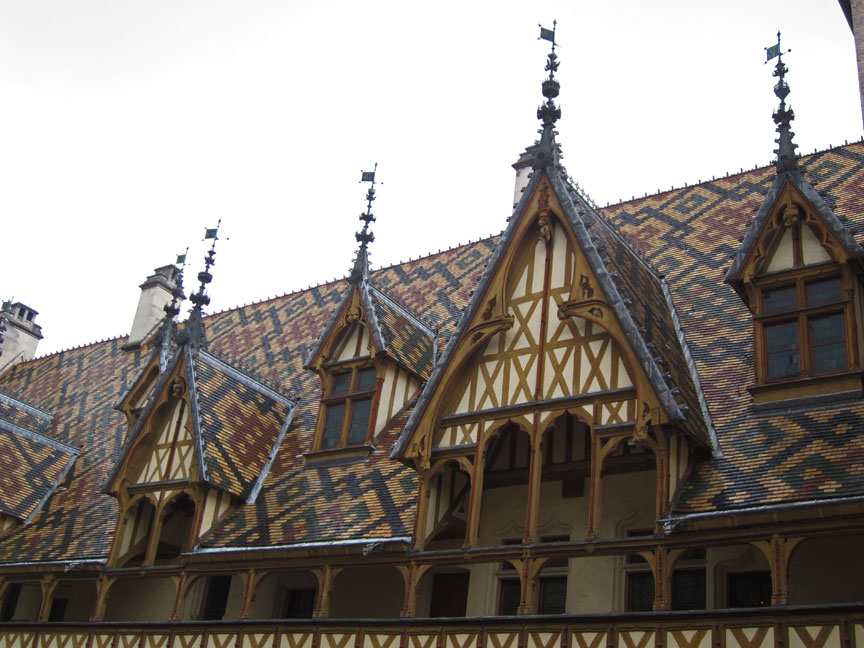
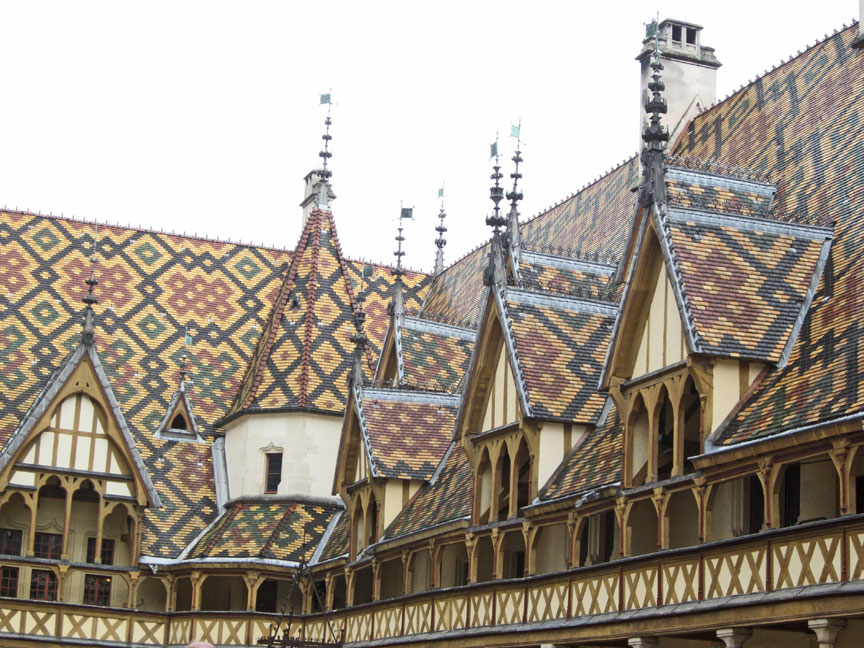
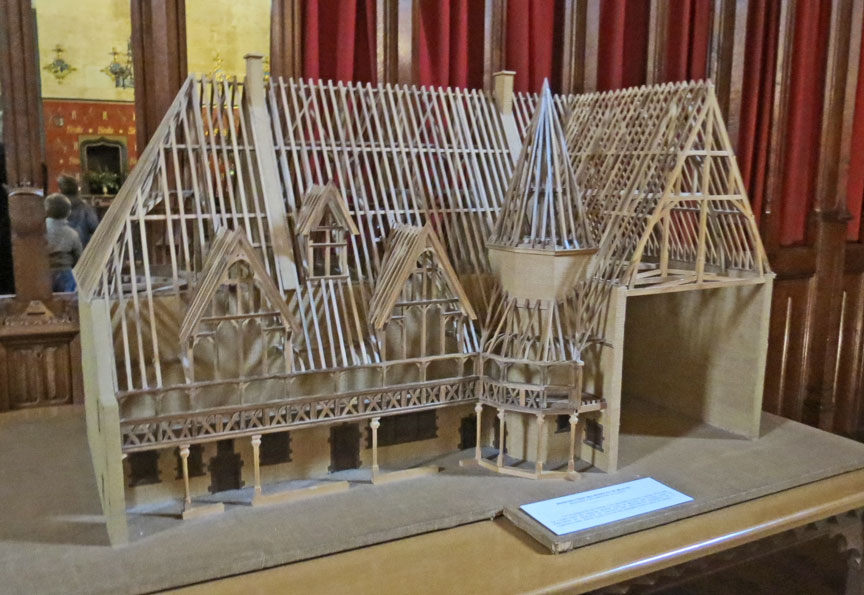
The Hôtel-Dieu was founded on 4 August 1443, when Burgundy was ruled by Duke
Philip the Good. The Hundred Years' War had recently been brought to a close by
the signing of the Treaty of Arras in 1435. Massacres, however, continued with
marauding bands (écorcheurs) still roaming the countryside, pillaging and
destroying, provoking misery and famine. The majority of the people of Beaune
were declared destitute. Nicolas Rolin, the Duke's Chancellor, and his wife
Guigone de Salins, reacted by deciding to create a hospital and refuge for the
poor.
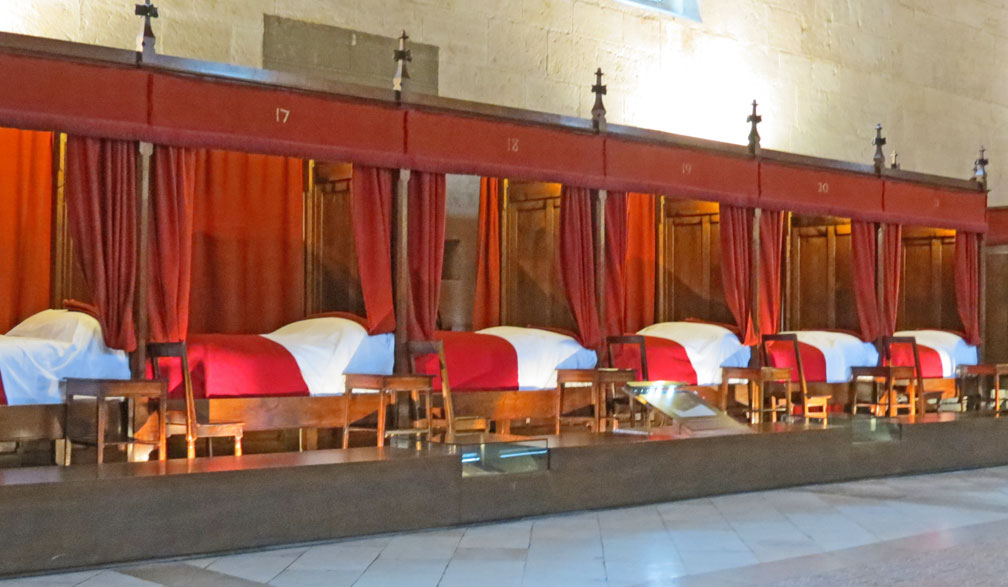
hospital beds
The Hospices de Beaune received the first patient on 1 January 1452. Elderly, disabled and sick people, with orphans, women about to give birth and the destitute have all been uninterruptedly welcomed for treatment and refuge, from the Middle Ages until today.
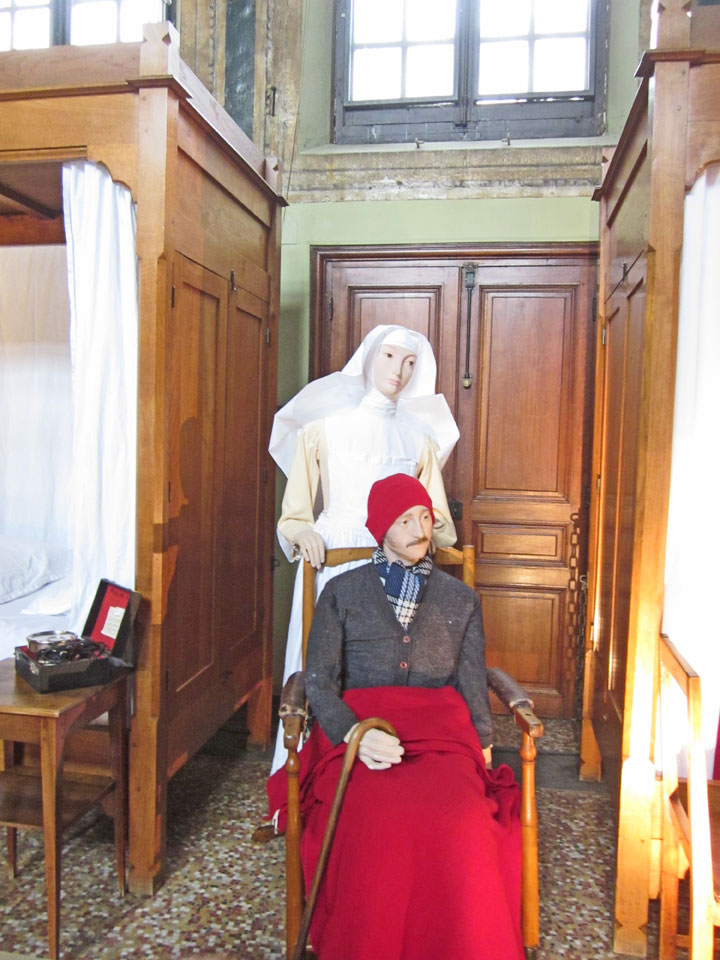
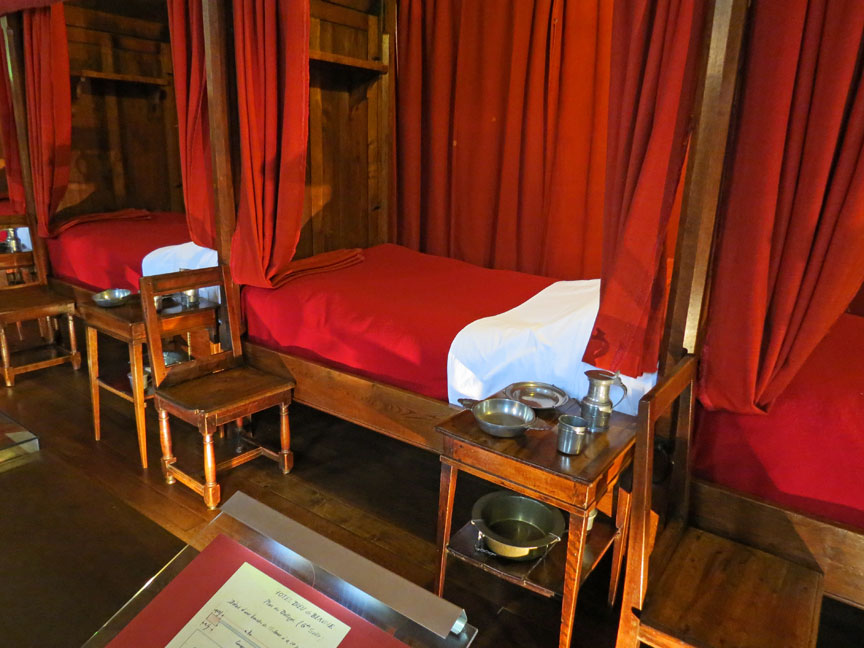
Over the centuries, the hospital radiated outwards, grouping with similar
establishments in the surrounding villages of Pommard, Nolay, Meursault. Many
donations - farms, property, woods, works of art and of course vineyards - were
made to it, by grateful families and generous benefactors. The institution is
one of the best and oldest example of historical, philanthropic, and
wine-producing heritage, and has become linked with the economic and cultural
life of Burgundy.

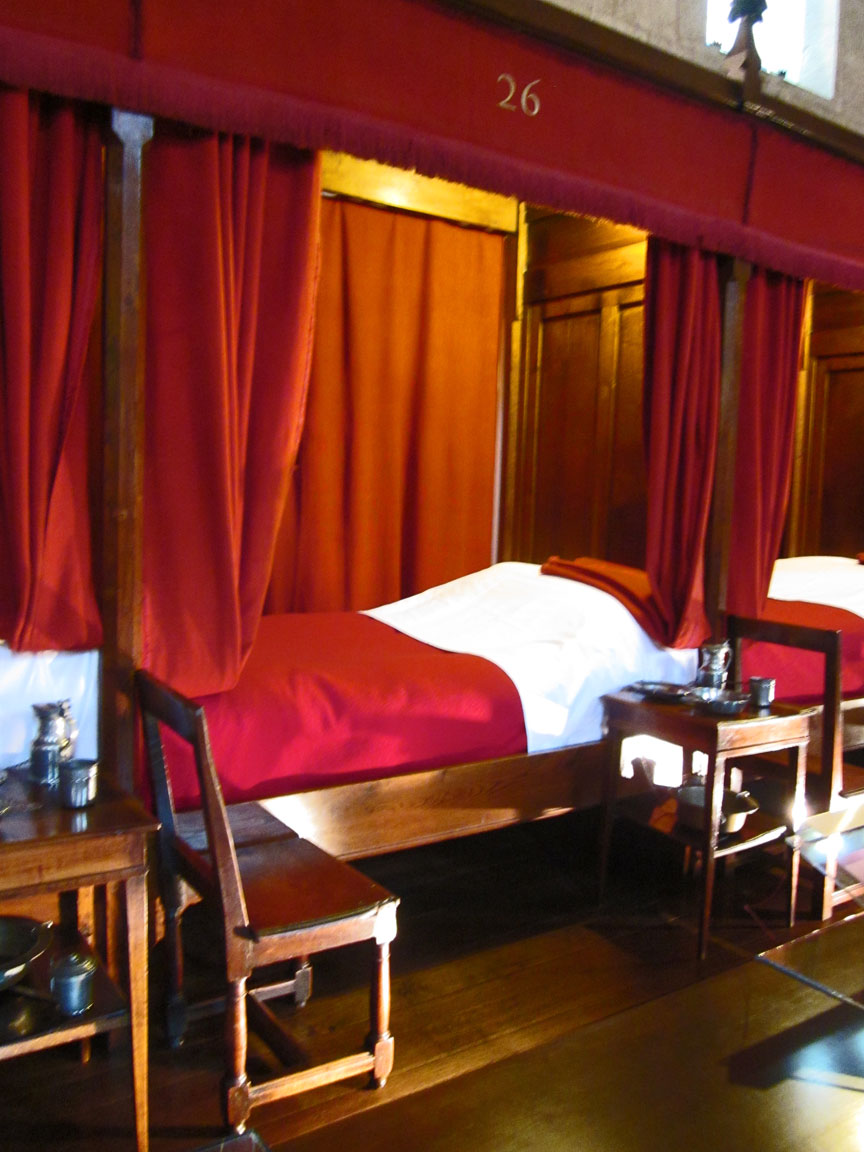
With a rectangular format, it is the best location to admire the different
buildings amongst which three are decorated with a glazed-tile roof. This
technique has probably its origins in Central Europe (possibly from ceramics
master Miklós Zsolnay of Pécs, Hungary) but became quickly a landmark of the
architecture from Burgundy (other glazed-tiled roofs could be observed in Dijon
for instance).
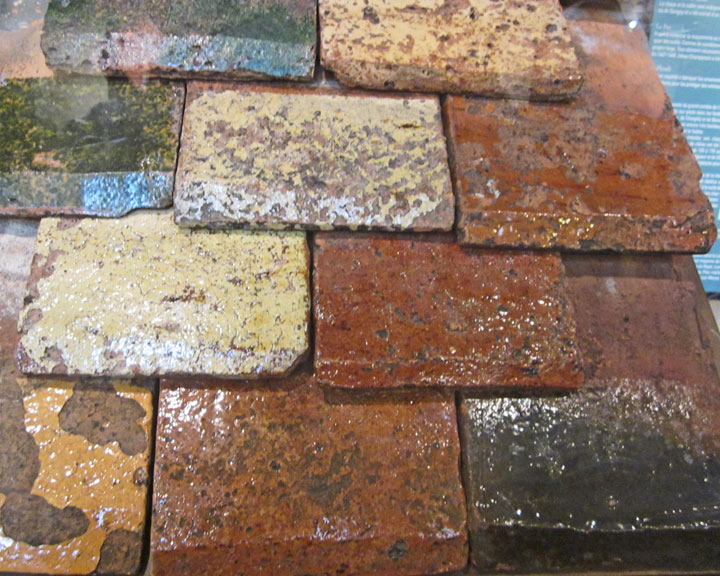
glazed-tile of the roof
These tiles have four colours (red, brown, yellow and green) with interlaced designs. The current tiles have been recreated between 1902 and 1907. The Northern, Eastern and Western buildings include a two-level gallery with stone columns on the ground floor and wood beams on the first floor. Many dormer and attic windows can be observed with finely detailed wood and iron works. A well with gothic ironwork can also be seen in the centre of the courtyard.
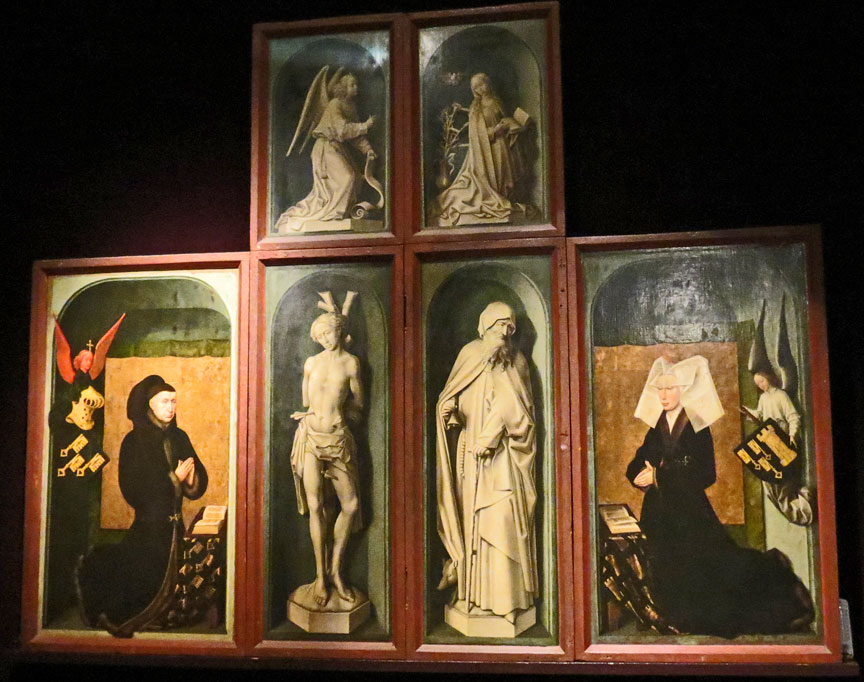
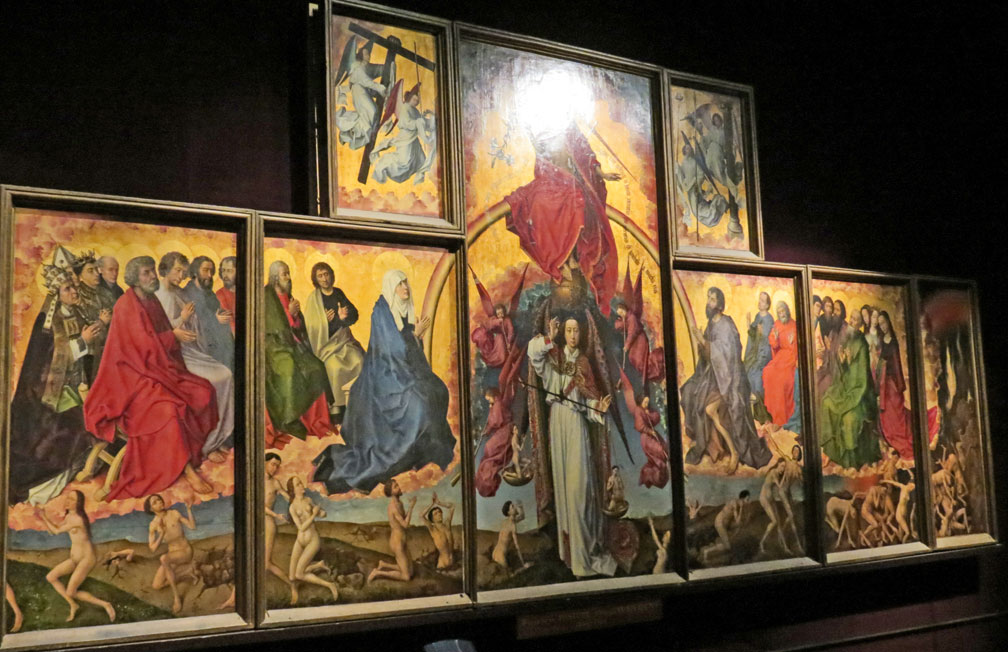
The Polyptych of the Last Judgment, by Rogier van der Weyden.
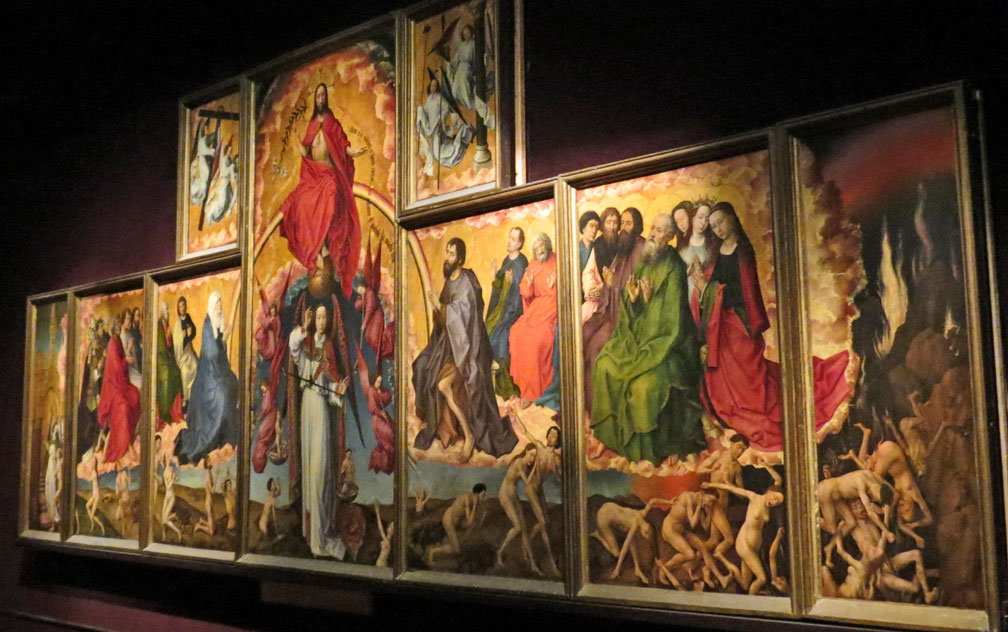
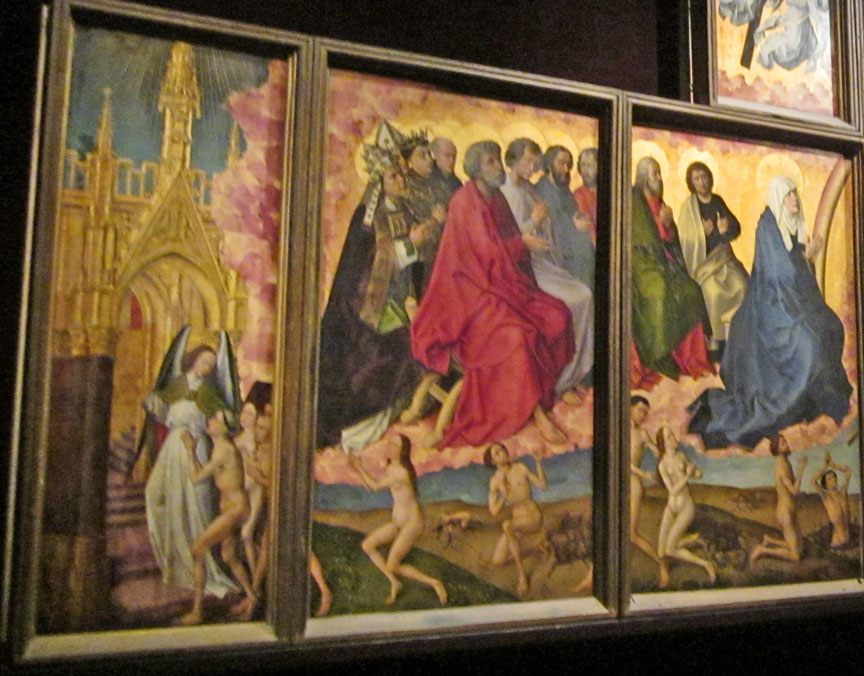
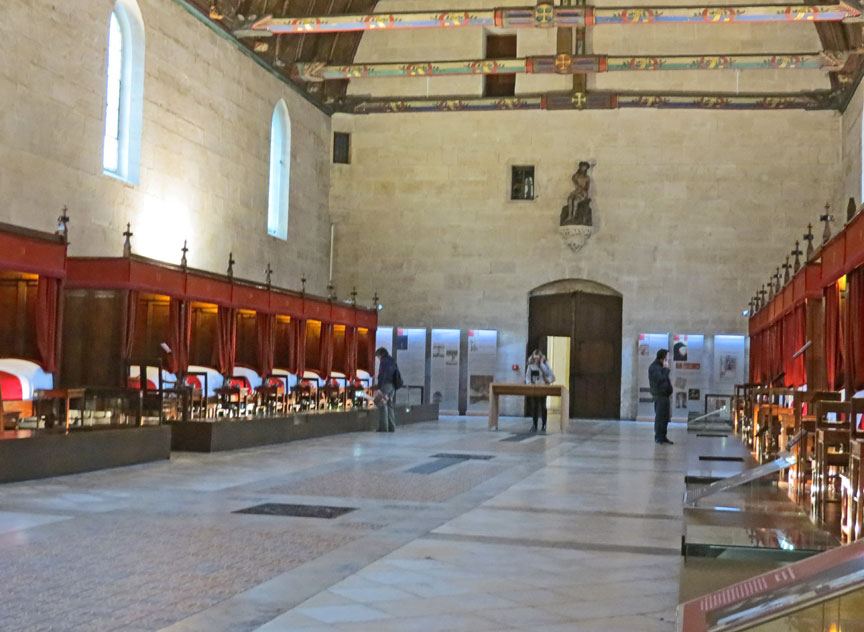
Room of the Poors

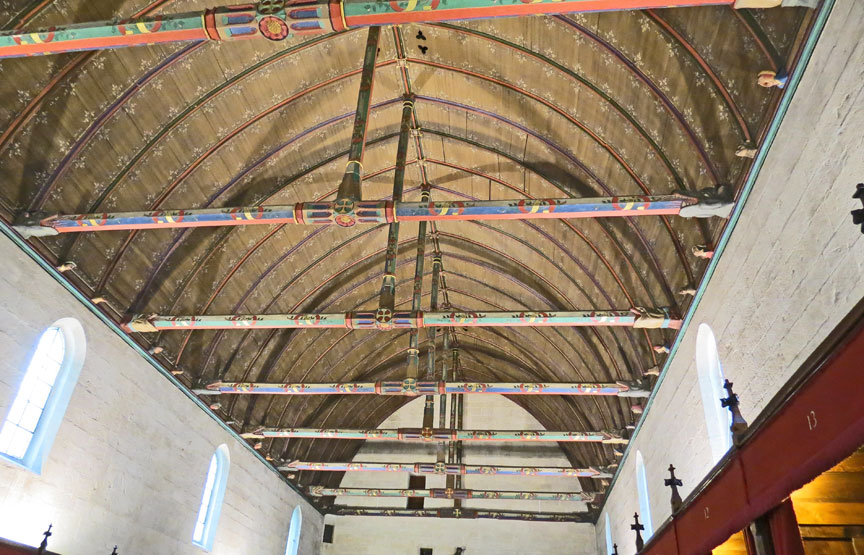
the ceiling
The Room of the Poors measures 50x14x16 meters. On the ceiling, the visible painted frame is in an upside down boat-skiff shape and in each beam are sculpted caricatures of some important Beaune inhabitants. On the floor tiling are written Nicolas Rolin's monogram and his motto "Seulle" referring to his wife, Guigone de Salins. The room is furnished with two rows of curtained beds. The central area was dedicated to benches and tables for the meals. The pieces of furniture have been brought together in 1875 by the son in law of the architect Eugène Viollet-le-Duc. Each bed could welcome two patients.
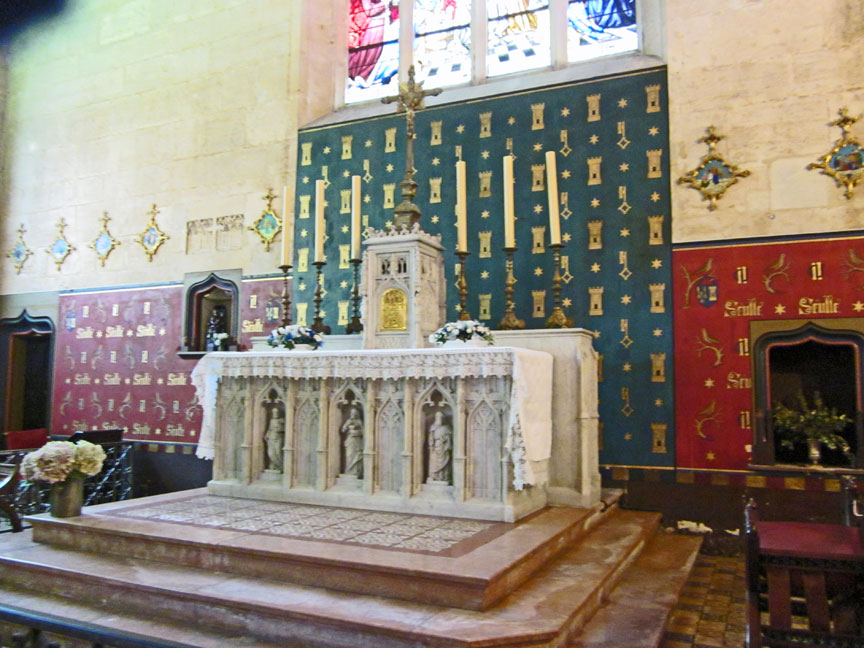
chapel
Following the large ward is the Chapel. The place for the chapel was chosen to allow the bedridden to attend Mass from their beds. Originally this was in the chapel polyptych the Flemish painter Rogier van der Weyden. The remains of the Guigone Salins are buried here. In November 2010 the very first Catholic wedding since the construction of the building in 1443 was performed here. The wedding was between Mr Alessandro Conti and Miss Natalie Kunert.
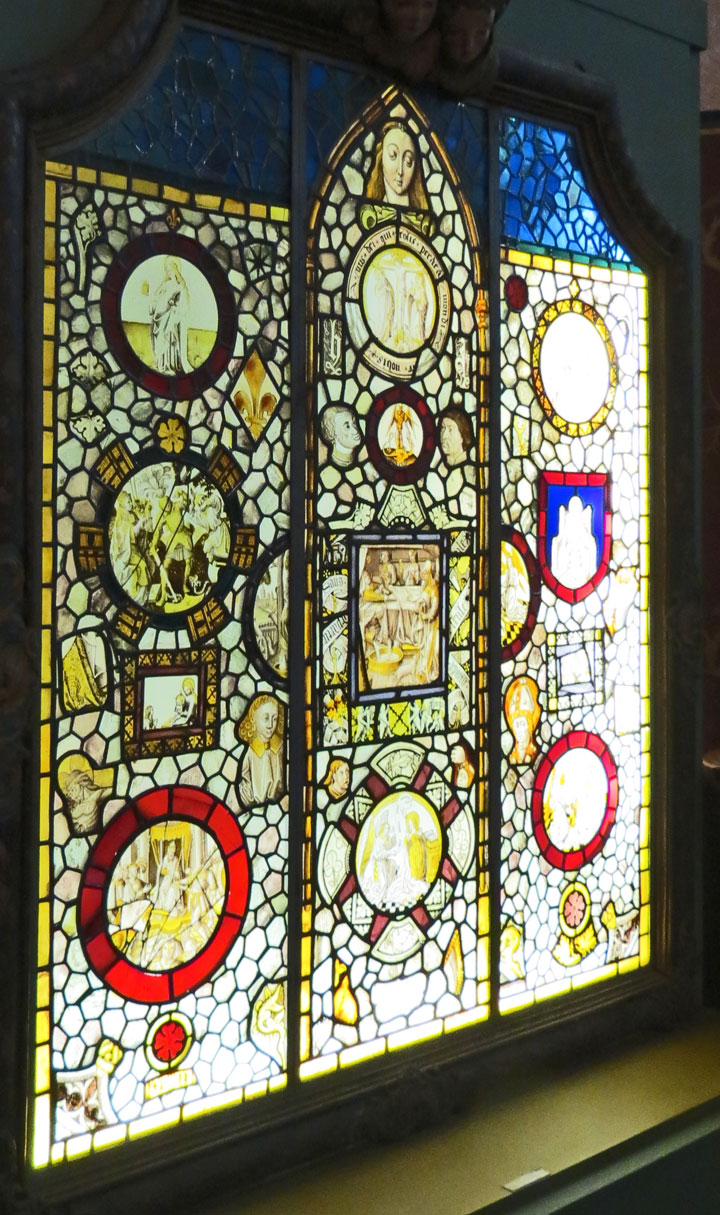
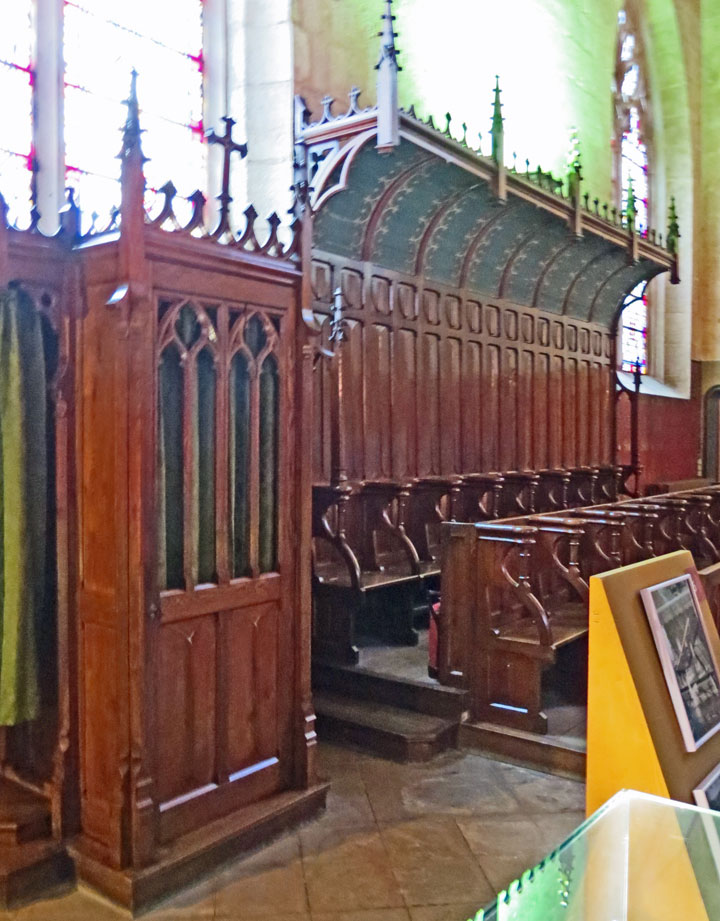
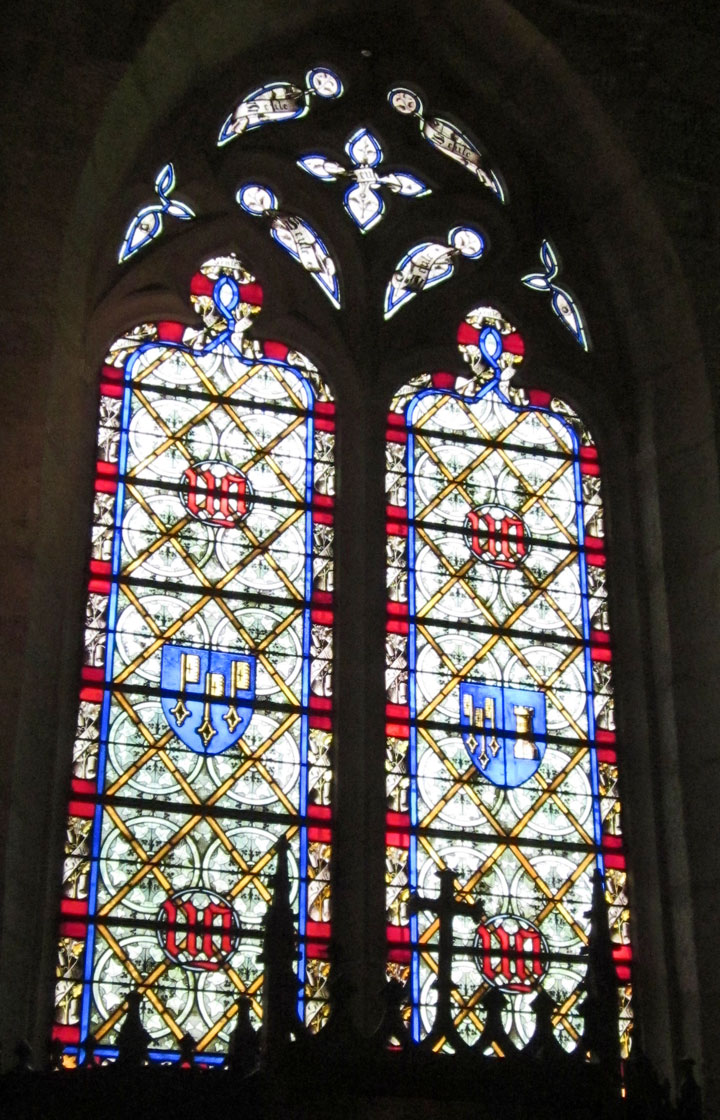

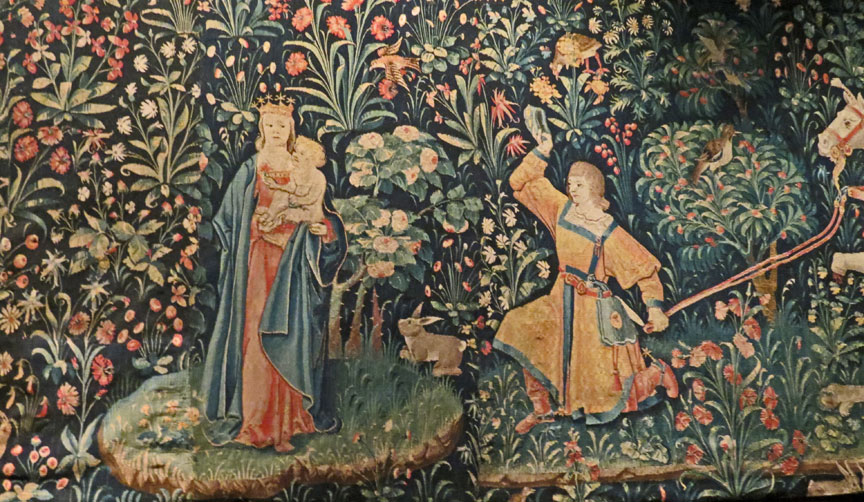
The hospice possesses many artistic treasures, among them the mural paintings of
the 17th century in the Salle St Hugues and an altarpiece,
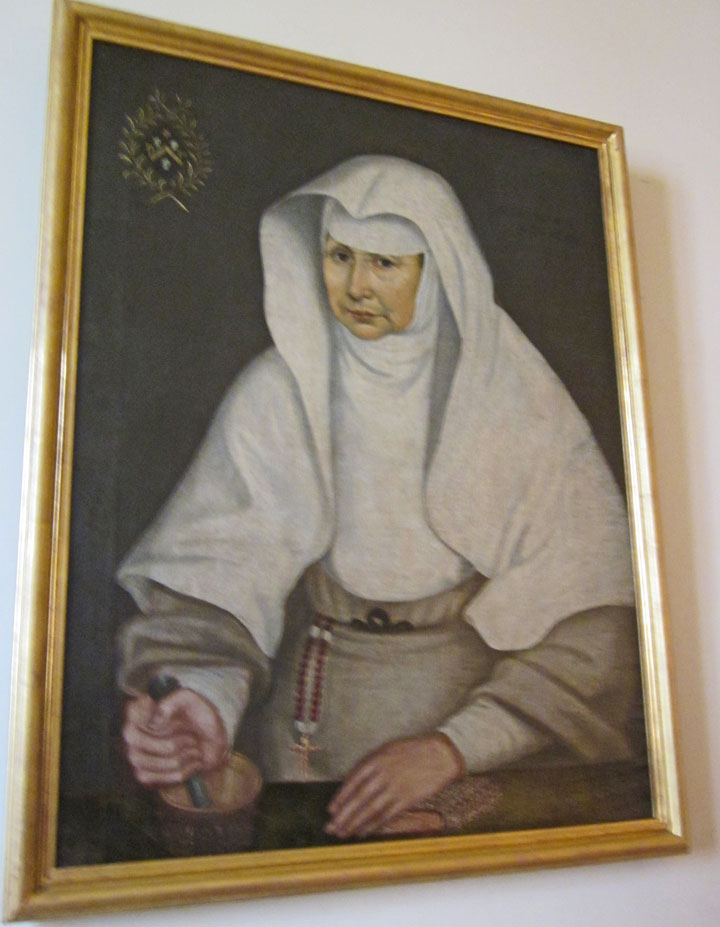
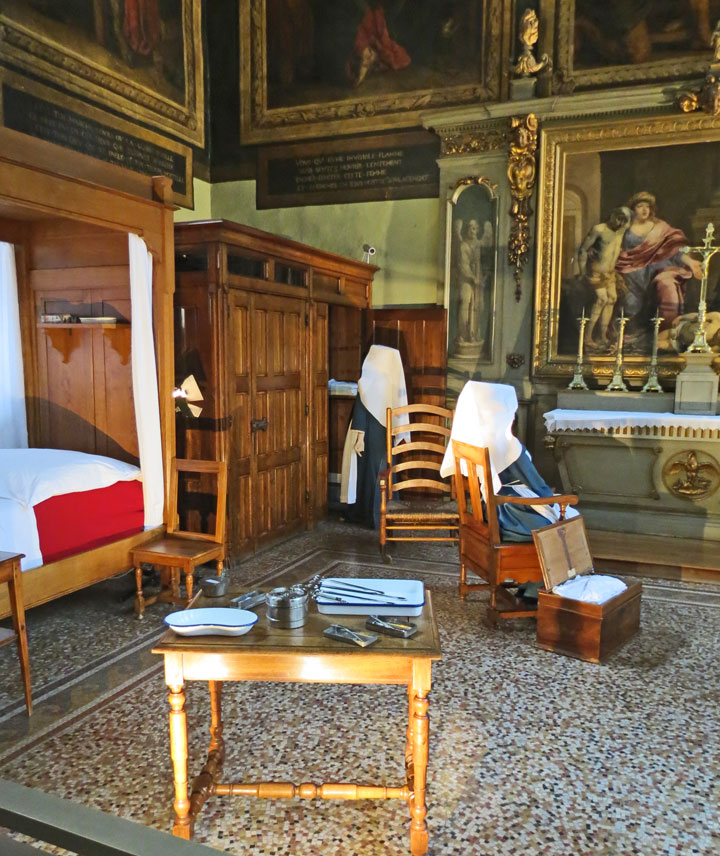
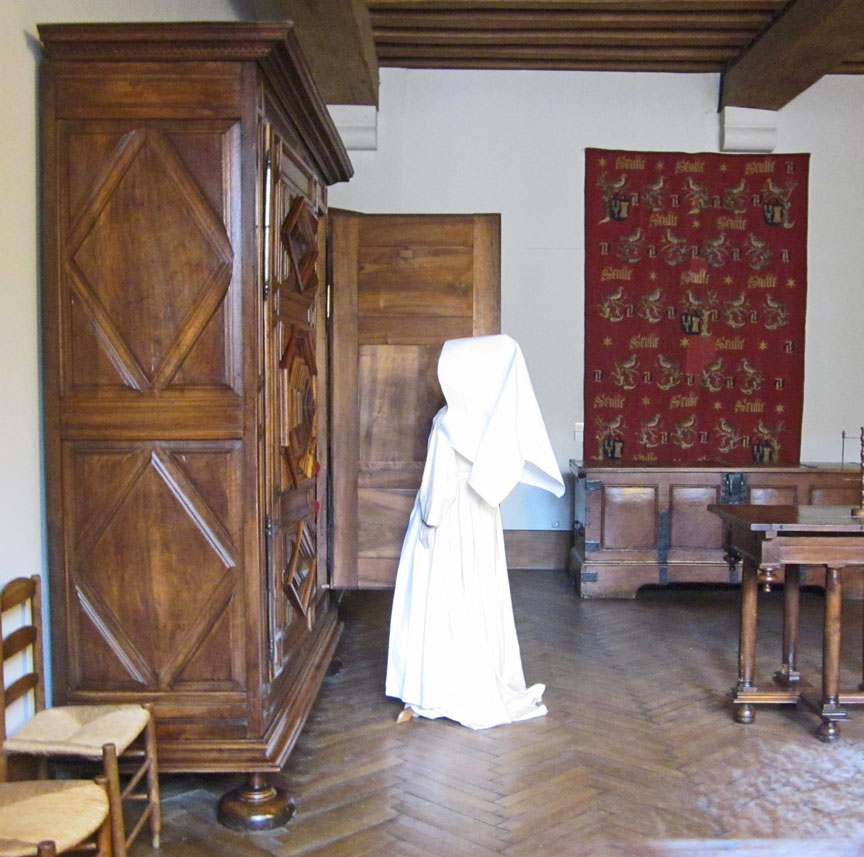
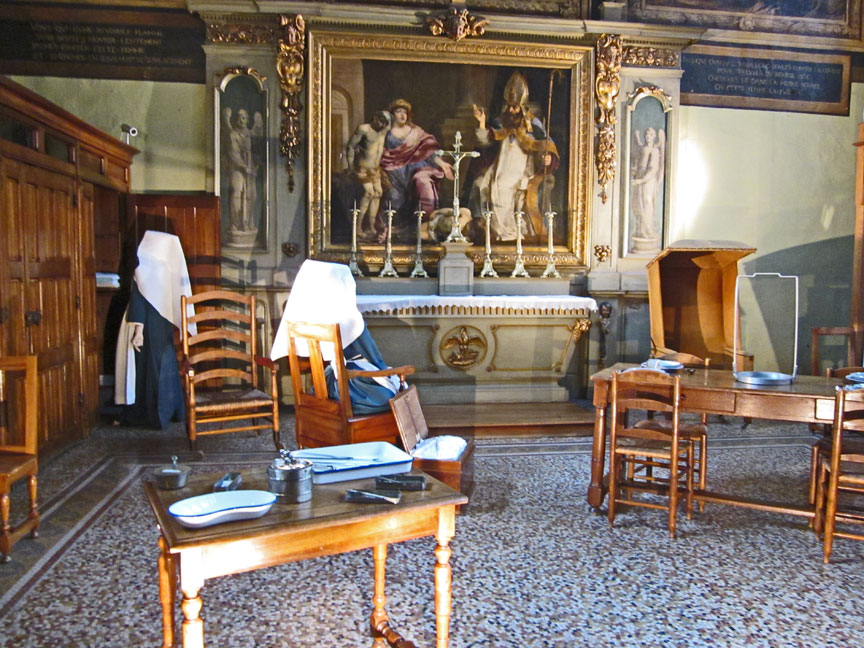

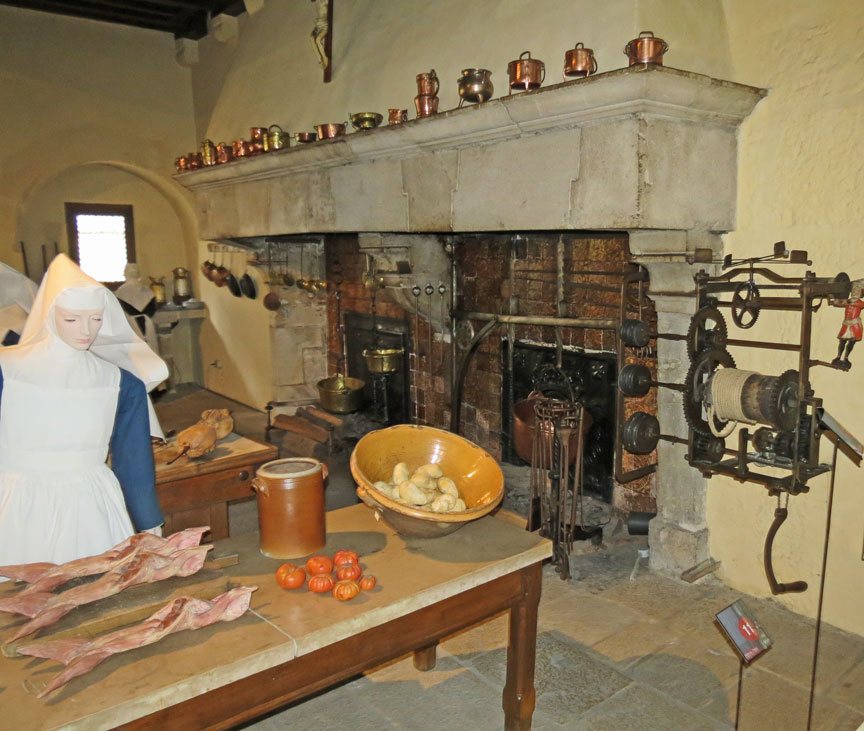
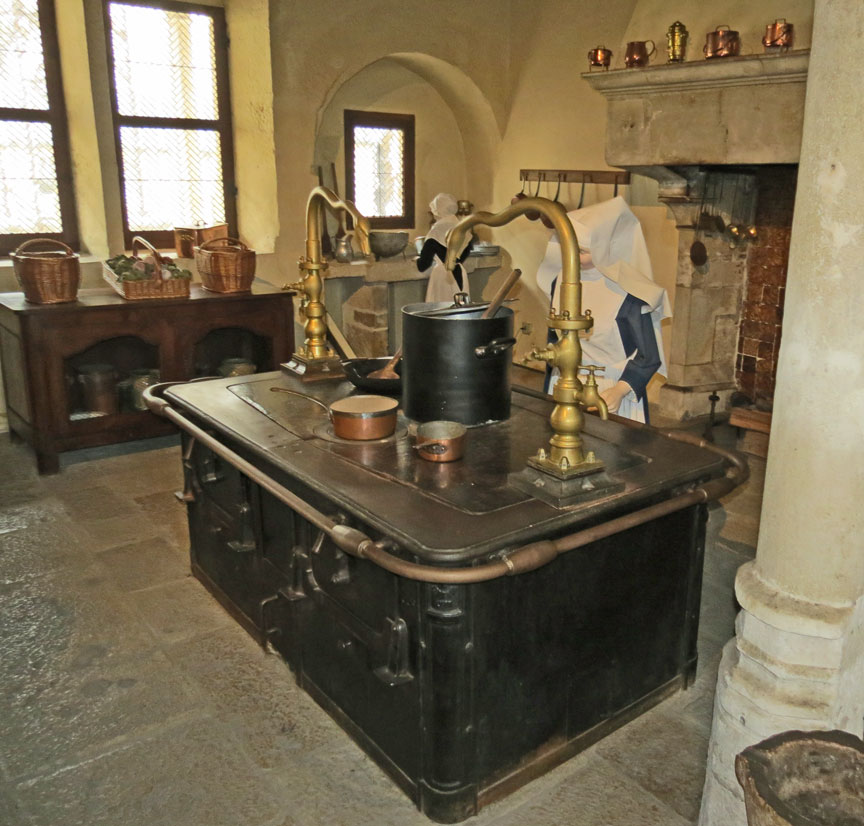

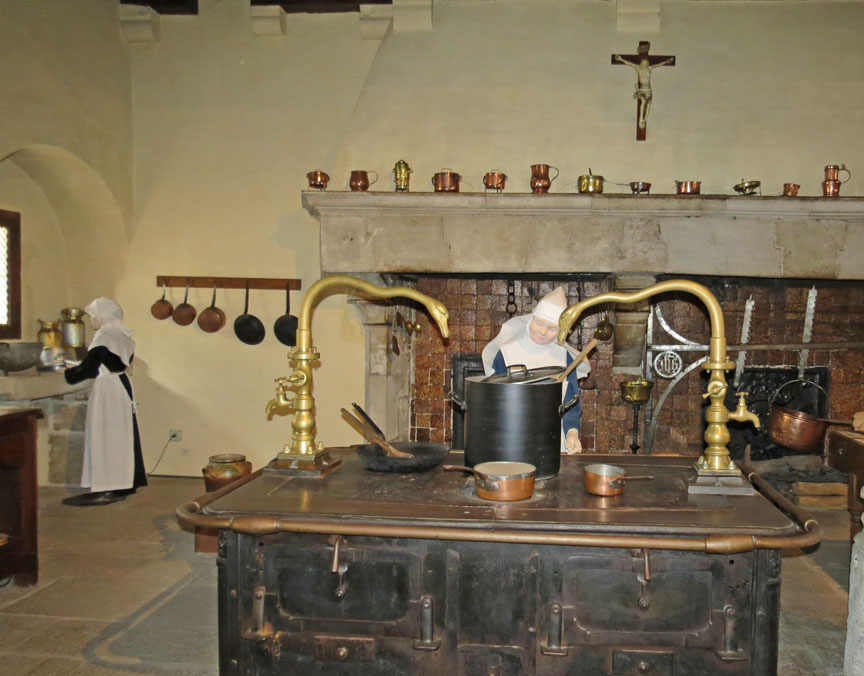
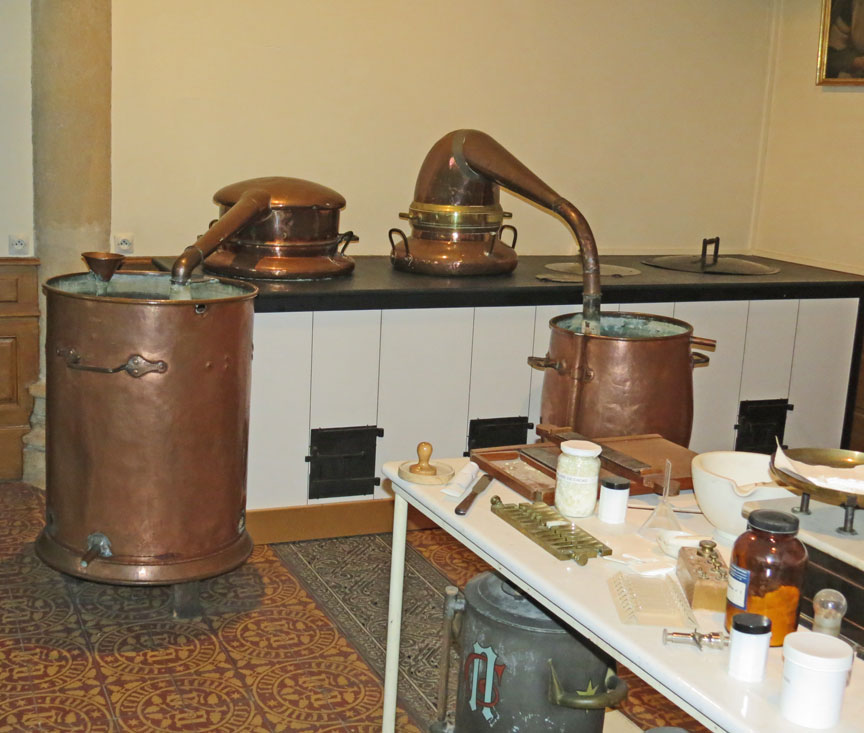
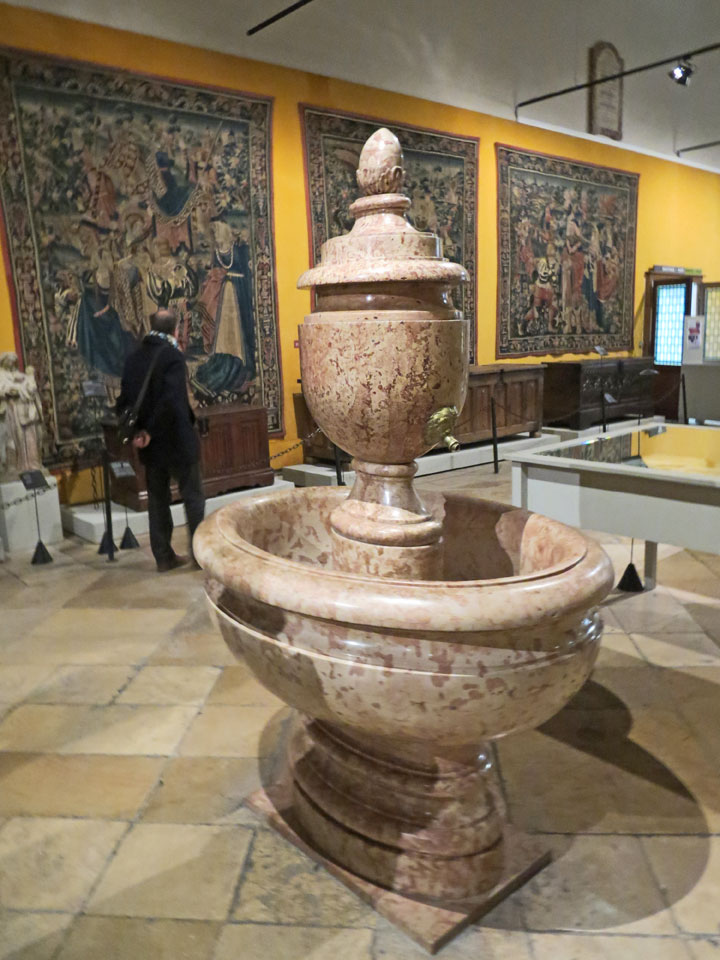
The charity auction been arranged annually since 1851, taking place on the third
Sunday in November amid a three day festival devoted to the food and wines of
Burgundy called Les Trois Glorieuses. The charity is preceded by a black tie
dinner at the Clos de Vougeot on day one and followed by the lunch La Paulée de
Meursault on day three. The Domaine des Hospices de Beaune is a non-profit
organisation which owns around 61 hectares (150 acres) of donated vineyard land,
much of this classified Grand and Premier cru. With bidding by professional and
private buyers, the barrels, from 31 cuvées of red wine and 13 of white wine,
attain prices usually well in excess of the current commercial values, although
the results give some indication of the trend in expected bulk wine prices for
the vintage from the rest of the region.
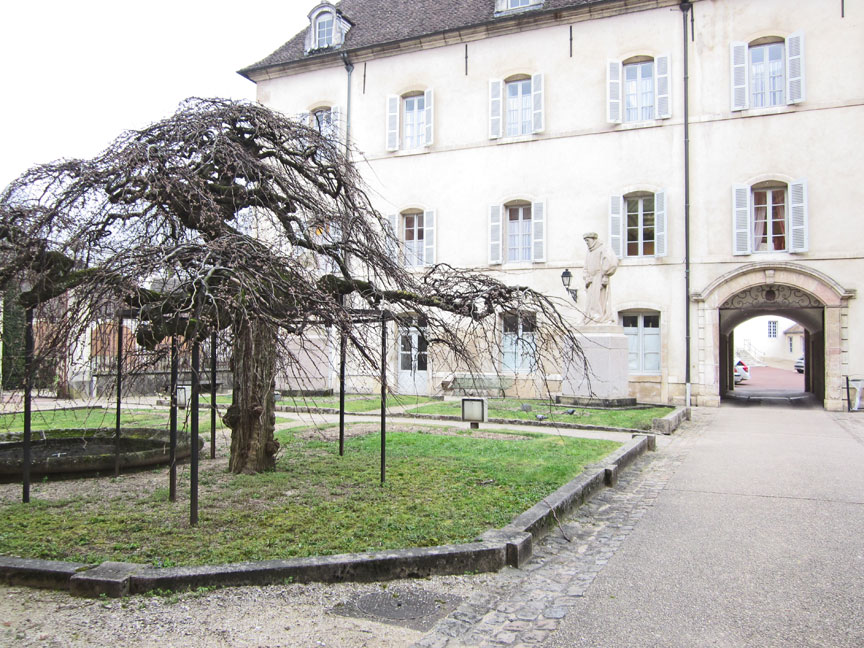

The auction has been organized by Christie's since 2005, setting a record total
figure at the 149th auction in 2009 when 799 barrels were up for sale, and 40%
bids by telephone, internet or fax connecting some 500 participants from around
the world, the auction has in recent years evolved from a wholesale market to a
retail market.
Text from Wikipedia
